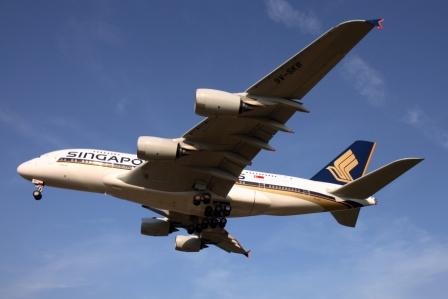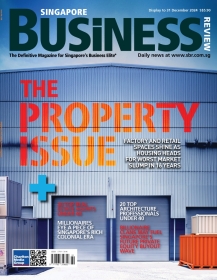
Will cheap jet fuel costs continue to save Singapore Airlines from declining revenues?
Yield pressures are rising.
Singapore Airlines’ (SIA) FY16 revenue has declined 2.2% to S$15.2b blamed on lower yields at parent airline and its cargo business. Had fuel cost not dropped significantly, the decline in revenues could have been bigger.
SIA's net fuel cost for 2016 declined 18.9% to S$4.5b despite a 41.3% plunge in average jet fuel price, as it was partially offset by a 107.4% increase in hedging loss. OCBC Investment Research estimates that stripping out certain one-off non-operating items, FY16 core PATMI rose 95.0% to S$701.6m but still came in below the street’s expectations. Looking ahead, the key factor it said is whether SIA’s declining unit cost from cheaper jet fuel is able to outpace the weak yields outlook.
Here's what analysts had to say.
Eugene Chua, analyst, OCBC Investment Research
We believe SIA's improving fuel hedges couldn't have come at a better time – a period of intense competition where weak yield environment is the result. In our view, the key factor is whether SIA‟s declining unit cost from cheaper jet fuel is able to outpace the weak yields outlook. With SIA planning to takes delivery of 13 new fuelefficient A350-900s and returning five less fuel efficient aircraft to lessors in FY17, we expect more fuel costs savings other than that from improved fuel hedges, but full impact only from FY18 onwards. FY17 will also see the first fullyear impact of Scoot using its fleet of 10 new fuel-efficient B787s.
Note that Scoot benefitedfrom rapid expansion and delivery of the new B787s throughout FY16 recording a S$95m improvement in operating profit to S$28m. We also expect more meaningful impact in FY16 from SIA enhancing connectivity between Scoot and Tigerair network. All said, we expect decline in costs driven mainly by cheaper fuel to mitigate the weak yields environment.
Mohshin Aziz, analyst, MayBank Kim Eng
We forecast overall yields (passenger + cargo) to erode by a further 3.7% in FY17 as the long-haul sector continues to face stiff competition. However, we forecast unit cost to decline by 4.2% YoY in FY17 as SIA enjoys the benefit of the lower fuel price as its expensive fuel hedges expire. SIA will also derive some cost savings on the planned removal of two older Boeing B747-4F, one Boeing B777-3 and four Airbus A330-3, and replace them with ultra-modern and efficient new aircraft models.
Raymond Yap, analyst, CIMB
The group’s all-in price of jet fuel fell US$33/bbl yoy in FY16 (to US$84), but we forecast it to drop ‘only’ US$13/bbl in FY17 (to US$71), inclusive of hedging losses. This is based on a spot price assumption of US$60 and SIA’s existing 31% hedge book at an average strike price of US$81. The smaller drop is of concern if yield declines accelerate.
The SIA group may struggle to deliver earnings growth in FY17 The cargo business could see larger losses in FY17, while mainline SIA’s profits could shrink slightly on yield pressures, offset by higher earnings at SilkAir and Scoot. The net result could be flattish group profits that may not inspire share price performance.
























 Advertise
Advertise






